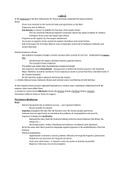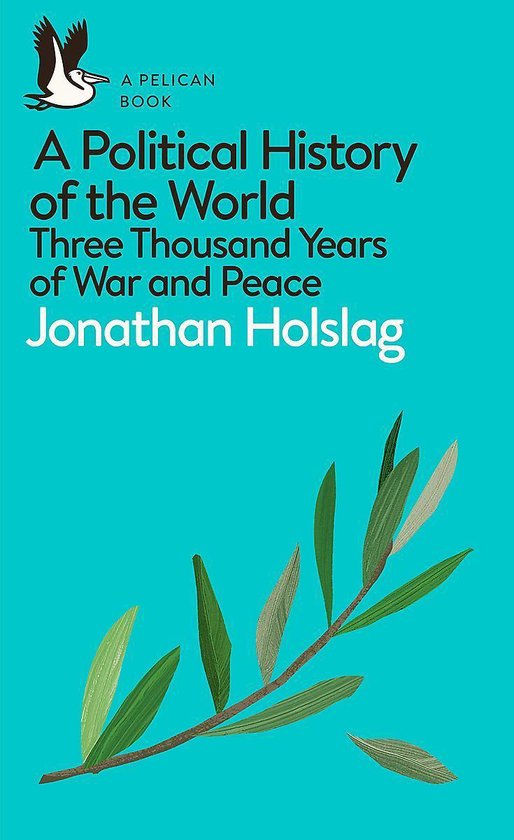1-250 CE
At the beginning of the first millennium CE: China and Rome remained the largest empires
Rome:
- Power was centered on the control of trade and agriculture on the Med.
- Expansion was its defense.
- Pax Romana: a century of stability for the heart of the empire (Italy)
- The two centuries following Augustus’ ascension: barely any major incidents of violence.
- Foreigners from across the empire paid tribute
- Tripartite world: capital city, the empire, barbaricum
- Its success is argued to have caused the empire’s decadence and moral decline.
- End of the peace: By C3, border defence was increasingly outsourced to barbarian foederati, and
unrest internally.
Similar situation in China:
- Han Emperor Guangwu brought a century of peace after a period of civil war - established the Eastern
Han.
- Demilitarised the empire, abolished slavery, popular reforms.
- The nomadic threat weakened.
- The golden age ended when the barbarians regained strength.
- Han emperors chose retrenchment - using proxies to defend the border (similar to the foederati)
- Major rebellions caused by members of court gaining so much in power that they controlled much of
the Chinese farmland.
- By 220: last Han emperor deposed, fracturing the empire.
==> Border defense issues, barbarian threats and internal unrest contributing to both declines.
In their shadow, lesser powers organized themselves in various ways: sometimes collaborated with the
empires, other times defied them.
A contest for control of the Silk Road between the Kushan Empire, Parthian Empire, Xiongnu.
Sometimes called on Rome or China for support.
The (Eastern) Mediterrean
Rome
- Period of prosperity due to military success. - new imperial tradition
- Record number of colonies
- Augustus propagated the idea that the Romans were the chosen people; patriotism.
- Colonies were an opportunity to externalise the problems of overpopulation and poverty.
- Augustus’ strategy was moderation
- Reduced the army, fixed the frontiers behind protective natural features (the Rhine, the
Sahara, etc. )
- His foreign policy: combo of hardness and softness, conciliation and repression
- But at the same time: fierce punitive campaigns against opposers of the establishment of the Pax
Romana.
- Political organisation
- Appointment of senators, consuls, praetors, officials now required Augustus’ permission
- Picked his own governors for ‘imperial’ provinces.
- Only a few client states - A wanted to exert his power as directly as possible.
- Majority of the army was on the periphery
, - Leaders of defeated tribes needed to prostrate themselves; would get mercy in return for
indemnities and regular taxes, accepting Roman law and sending children as hostages.
- Courier system for information
- Took important decisions himself; senate handled the rest.
- Foreign policy: wanted to stabilise relations with foreign powers
- Peace with Parthians
- BUT: Roman peace was shaky
- Never-ending string of resistance leaders - the Roman army was active at all times.
- Augustus’ successor Tiberius faced challenges
- Insurrections along the Rhine
- Power grab by Praetorian Guard
- Tax revolts in Macedonia and Syria
- ==> Stability gave way to violence
- Most emperors abused their power
- Growing numbers of immigrants
- Emperor Galigula was murdered by the Praetorians
- Short reigns of emperors - average of 6y between 68-249
- Trajan overstretched the empire’s resources: campaigns to Dacia, Parthia, Arabia at high costs
- Hadrian withdrew from Mes, lowered taxes, relied more on local soldiers
- Prosperity continued to decline under subsequent emperors:
- Marcus Aurelius tried to manage the overstretch and to quell border unrest.
- Others were more reckless
- Caracalla: sought world domination, spent heavily on the army; had to debase the
currency
- Abuse of power, corruption, endless wars for enrichment (Cassius Dio)
- Severus: realised the never-ending campaigns could make emperors unpopular.
- Disintegration of public order
- BUT: the empire survived this descent into anarchy.
- Partly because externally nobody could challenge its military power.
- Eg. Parthia was comparatively small
- Guerrilla tactics from tribes at the frontier were curbed.
- Romans had an unmatched capacity for long-range power projection due to their roads, navy,
galleys, ports.
- Were adept at playing tribes off against each other: allowing one to trade freely, excluding
another. One proclaimed an enemy, another a friend.
- Huge inequalities ==> imperial Roman society was inequality permanently pushed to the
limits of acceptability.
- Relations with barbarians (frontier)
- Ambivalent attitudes of barbarians towards the Romans: not wanting to be military
dominated, but also wanting economic benefit.
- Dacians (one of laeger societies on the frontier)
- Were bribed not to cross the Danube. But when there was internal turmoil in Rome,
Dacian kings began to raid across the border.
- Ferocious Roman response: Dacians defeated and incorporated.
- But continued resistance; ultimately forced Emperor Commodus to grant the tribes
greater autonomy.





